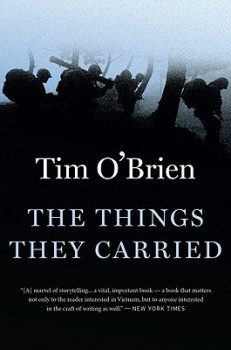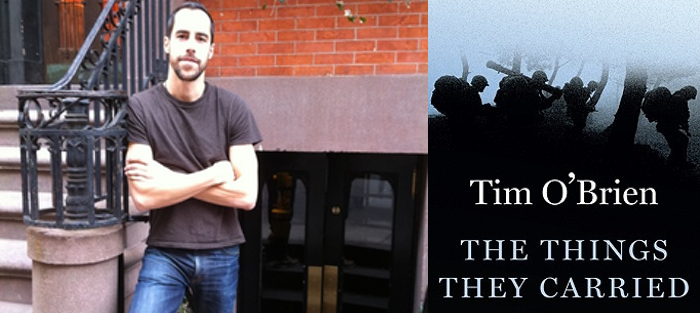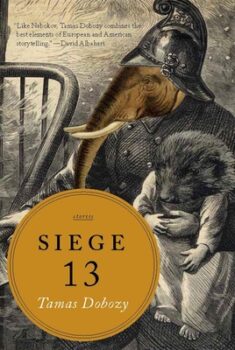 Tim O’Brien’s The Things They Carried (1990) has been a longstanding guide to writers and readers as a cornerstone of fiction writing, balancing emotional resonance through elegiac prose and steadfast narrative.
Tim O’Brien’s The Things They Carried (1990) has been a longstanding guide to writers and readers as a cornerstone of fiction writing, balancing emotional resonance through elegiac prose and steadfast narrative.
I first read The Things They Carried when I was a young writer. My literary education was non-existent, so anything I could get my hands on and lasso the voice of narrator/writer/tutor proved useful. Of course there would always be more to learn about story and structure, but one way I initiated my literary journey began with strong and clear narrative voices. Reading Tim O’Brien’s words was not unlike taking a bath and making sure I was purifying every square inch of my skin before I went back out in the world – or what was to be my writing world – and got plenty dirty.
The Things They Carried operates uncategorized. It’s not a novel and not a collection of short stories. Or it’s both. Regardless of classification, the subject matter surrounds young men experiencing the Vietnam War and the effects taken into and out of their experiences. Through these literal and figurative details the characters survive beyond the narrator, the reader, and the almighty expanse of well-crafted fiction.
One particularly moving story from this collection that I’ve always loved is “The Lives Of The Dead.” “But this too is true,” begins the last story in the collection, “stories can save us.” That beginning sentence became a mantra when approaching my own writing. Though it functioned as an ending to the book it appropriated a multiplicity of inspired beginnings. The voice initiating that story allowed me to write my own writing with expanded periphery.
My personal journey with “Lives of the Dead” often surrounded emotion, something John Gardner labeled as “conclusive emotion,” each page despairing and profoundly moving enough to believe was turning true even though it remained fiction. It painted a new way of seeing the world, of telling a story, of being a part of humanity. I was a jock in high school. Then I left my hometown. I sunk my teeth into literature. With all my boundless youthful energy, I happened upon this captivating story of a young mind in the midst of seeing his younger selves, and the lives still affecting him even though they were long gone.
 Confrontation becomes a powerful vessel in this narrator’s journey, and subsequently, the reader as passenger. As such, the memory of reading the story would not stop confronting me. It would resurface to me during random moments: serving beers to patrons at work, playing basketball at the park on a perfectly sunny day, and late at night when I’d get home and miss my ex-girlfriend.
Confrontation becomes a powerful vessel in this narrator’s journey, and subsequently, the reader as passenger. As such, the memory of reading the story would not stop confronting me. It would resurface to me during random moments: serving beers to patrons at work, playing basketball at the park on a perfectly sunny day, and late at night when I’d get home and miss my ex-girlfriend.
Though I never served or experienced war firsthand, reading “Lives” brought me to re-live people I’d been friends with at different times in my life, no longer available to me. Suddenly a book was resuscitating people I didn’t realize I cared so much about. I was captivated. In all of my years of reading books that never happened.
Life tends to err toward confrontation, and on any given day I’m trying to take its temperature. I need to know how hot or cold it is before getting in. I’m often curious how our physical mobility will sustain through the unpredictable. I’m not good with or around death – and it’s not the physical aspect I have trouble accepting. If writing wields the right amount of levity and impact, we believe the words we hold in our hands, briefly living through another person’s imagination, and when they convey life and death within such inflections, we can’t help but confront something beyond the limitations of our lives.
Joan Didion said you have to pick the places you don’t walk away from. Chekhov said we must write to agitate our readers. When I read Tim O’Brien, I feel he’s agitated to pick his characters, and by putting them in a place through memory he establishes traction. O’Brien can’t remove himself from remembering lost loves in childhood, lost friends in battle, while moving forward and living on when he’s carrying the memories of everyone through details of their existence. “That’s what a story does,” he writes. “The bodies are animated. You make the dead talk.” O’Brien renders emotion and memory through corroboration. Through these enthralling memories his writing is so steadied one can hear him breathing through the text.
Each time I pick up “Lives” I’m speechless against the world for a spell, thinking so hard about the people I’ve known. Suddenly, I’m younger than my current age, imagining all the places they’ve continued in their lives, attempting to document where they’ve traveled, the fabric of what bound us being what introduced us in the first place. Confrontations. Connections. Memories. The Agitation of Self.
“The Lives Of The Dead” was the first story to make me cry, and having such an earnest confrontation with it – with characters, with people I’ve been living with in the pages of a book – brought overwhelming sadness to me, reminding me to appreciate the world a little more each day, reminding me I’m alive at the end of this story, given free will to continue through my own experiences, the lives of the characters within now absorbed into mine.
It’s the invisible force guiding us each time we pick up a book we can’t put down, each time we get so excited reading quality writing on a page our heartbeats accelerate, uncertain of destinations. The characters in the story become the characters we know in our lives, manifesting through everyone around us, angling their way from the books into stories we engage every waking day, inside our hearts and minds, wholly persuasive. Tim O’Brien’s fiction is undoubtedly true. Stories can save us.






